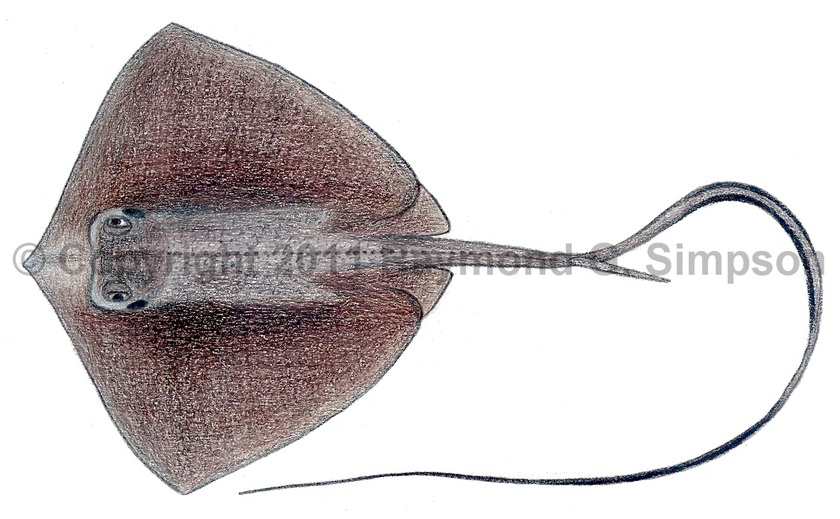
Common Name
Longnose Stingray
Year Described
Bloch & Schneider, 1801
Identification
A long-snouted species of Hypanus with a broad, rhomboidal disk. Eyes and spiracle relatively large. Tips of pectoral fins subangular (not rounded). Pre-orbital length much longer than distance between the spiracles, with straight to concave margins of snout. The dorsal surface has a narrow patch of medial denticles bordering a line of median tubercles. Additional denticles on the interorbital space are often present. Ventral finflap much more pronounced than dorsal finflap. Tail extremely long and whip-like with spine close to tail base. Pelvic fins protrude beyond pectorals.
Color
Dorsum in various shade of brown. Underside pale. Thin part of tail black.
Size
Maximum size to around 200cm DW.
Habitat
Shallow coastal waters (<40m) on sandy bottoms.
Range
S. Gulf of Mexico to Brazil, including the Caribbean islands. Apparently absent from U.S. waters.
References
Last, P. R., Naylor, G. J. P., & Manjaji-Matsumoto, B. M. 2016. A revised classification of the family Dasyatidae (Chondrichthyes: Myliobatiformes) based on new morphological and molecular insights. Zootaxa, 4139 (3): 345-368.
Santos, H.R.S. and M.R. de Carvalho. 2004. Description of a new species of whiptailed stingray from the southwestern Atlantic Ocean (Chondrichthyes, Myliobatiformes, Dasyatidae). Boletim do Museu Nacional do Rio de Janeiro, Nova Série. Zoologia No. 516: 1-24.
Other Notes
Moved from Dasyatis to Hypanus based on morpological and molecular data (Last et al., 2016).